
Despite of the fact that I'm more a fan of non big tailed guppies, I do have to admit that I am and have been keeping big tailed guppies throughout the years. For sure there are certain big tailed guppies which will be graded the "wow-factor" by me but it's just a general thing that I'm not a huge fan of big tailed guppies.
Nevertheless, fancy guppies come in a variety of body shape, fin shape, body size and coloration. And that makes it so interesting to keep fancy guppies as well...
One of my demands when keeping large tailed guppies, is that the body should have a firm build. So, not too slender. This is to avoid a bending body which will result in a shorter lifespan.

Filigree shorttail
Ever since 2015, I'm also keeping smaller filigree short tail guppies. They've been sold on the market as being galaxy guppies but they're not galaxy guppies at all. This version is also smaller in body size than most galaxies. I used to have larger sized galaxy red round tail guppies from a breeder in Braunschweig (Germany) but lost the females because of severe heat conditions during summer (2012). Fortunately, a small group of juveniles of this strain had been given to me by Ciska Sciarone from Zwolle (the Netherlands) as well and after a while I've continued the breeding program. At the end of 2013, I've sold the whole colony to a Belgian breeder.
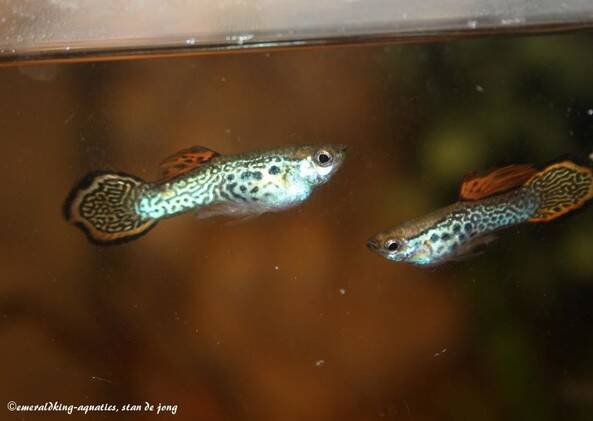
In comparison to the galaxy red round tail I had, these filigree short tails are missing the metalhead. I deliberately call them filigree short tails for the caudal of each male is short but the shape differ per individual male. They come in round-, spade, cofer- and flagtail.
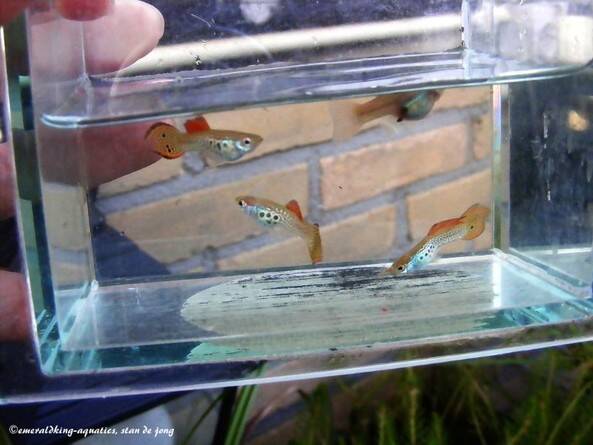

These are metallic guppies with spotted markings all over the body and orange-red markings and specifically on the fins. Also this strain is easy to keep and for sure an easy breeder.
Platinum orangetail
Another small bodied guppy from Japanese breeder Kenjiro Tanaka is the platinum orangetail.
The males have round and spade shaped tails and a slight extended dorsal fin. Furthermore, some brown markings on the lower part of the sides and orange-red colored saddle, dorsal and caudal fin. All males are slender build.
The females however are bronze bodied with a somewhat yellow-orange colored dorsal and caudal fin.

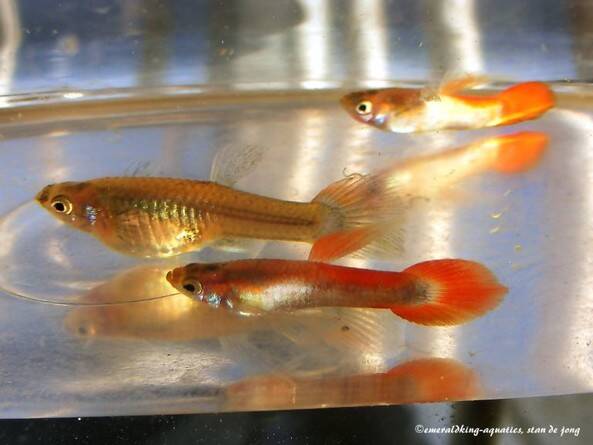
Despite of the small body size, these guppies are well prolific. These guppies are really suitable for smaller tanks.

Delta red
In 2014 I've purchased a small group of delta reds for an acquaintance of mine. But at the end he decided to choose another strain instead of this one. So, I've decided to keep this strain to myself and breed with it despite of the fact that I'm not a huge fan of big tailed fancies.
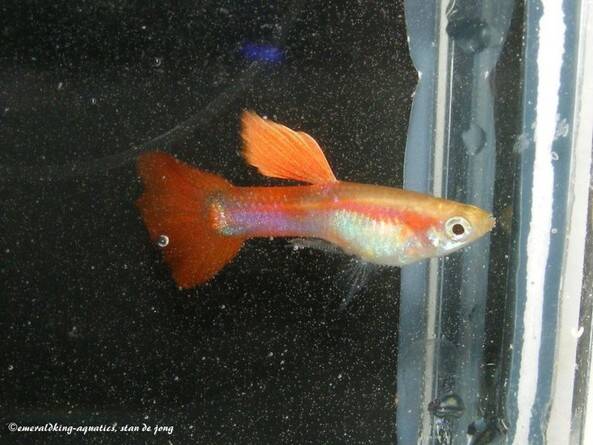
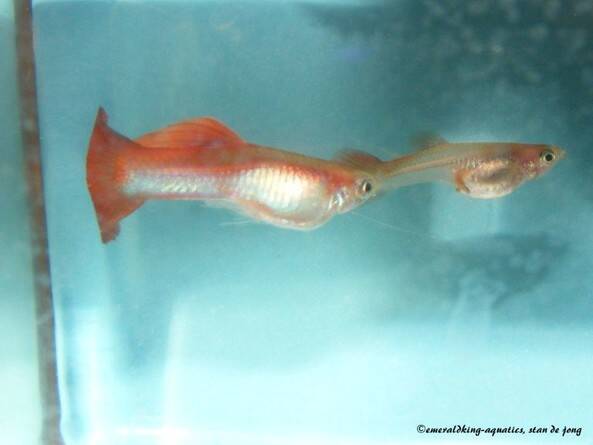
Be sure if you purchase delta reds that they're not actually flamingo or moscow reds. I've noticed that from time to time these three are mixed up with another.
These fancies are born blonde and the males will be red covered for most part of the body. Females however only show red in their caudal and dorsal fins. And a slight red on the saddle to the caudal area.
Below: Some juvenile red deltas.

Ginga rubra blonde
The first Ginga rubras (blond) were purchased by me back in te beginning of 2014. But I had complications after a while and all of that stock got lost. Mid 2014, I've started again with a small group of these guppies and that seemed successful. Once they're acclimatized, they will start reproducing pretty fast.
I do have to note that in my opinion those blondes are a bit more sensitive in comparison to the grey variety.

This strain has its origin in Japan and has been created by mr. Kenjiro Tanaka. It's a short tailed (some may have a sword or a doublesword) fancy guppy with a beautiful metallic shine where red, orange, yellow and purple meet up with eachother. They come as grey and blond based bodies. He used wild guppy influence to create all his Ginga strains. This remark has been made by Kenjiro Tanaka personally in a conversation we had on a former account of mine that got unfortunately hacked. Unfortunately, the commercial trade labeled them as being endlers and endler hybrids. This is totally incorrect. There's zero endler influence in all Ginga strains ( Ginga rubra and Ginga kinubali) of Kenjiro Tanaka. Also the Ginga sulphureus is a pure guppy. But the Ginga sulphureus is a creation that was established by Alan Bias by backcrossing with lowersword females.


Above, left and right photo: Alan S. Bias.
American fancy guppy breeder and judge.

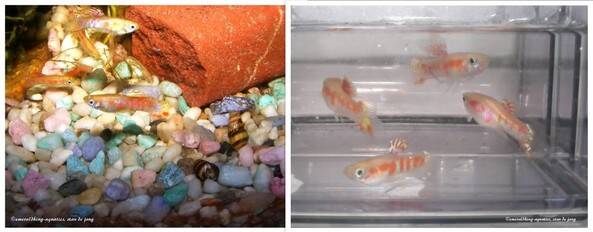
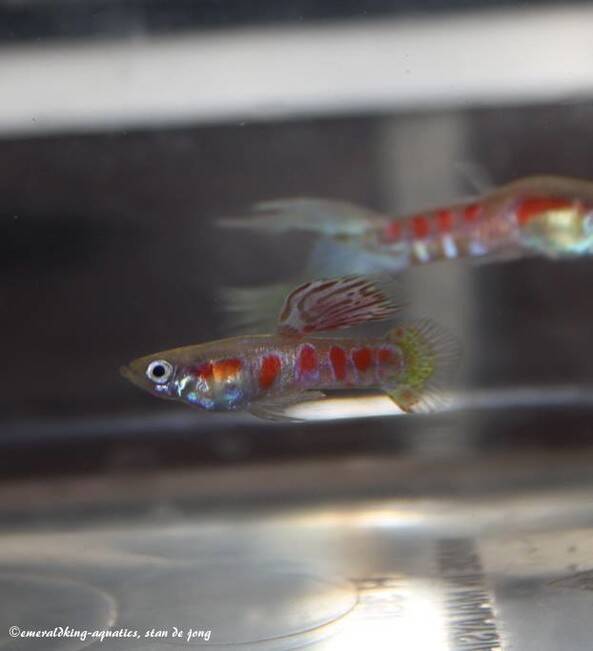
Ginga rubra grey
The description of the Ginga rubra grey is similar to the Ginga rubra blonde. Only difference is a grey based body.
Note: To maintain a good pattern on the blondes, generation after generation, mixing up with a grey based Ginga rubra does the job.


Most greys have a lot purple in them but some lack purple like these show.. But the Ginga traits are still recognizable...
Ginga kinubali
The Ginga kinubali is also a creation of Kenjiro Tanaka (Japan). This strain comes in grey and blonde based ones.
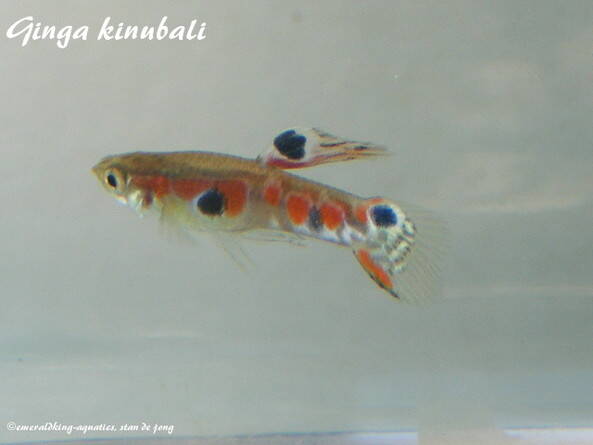

I´ve got my first Ginga kinubali grey from Tim bij ´t Vuur in 2016. They seem very prolific and don´t really differ too much from the Ginga rubra in their needs. In March 2017 also blonde offspring were born out of these grey ones.
Below: Different Ginga kinubali phenotypes.

Blue rio
Another creation of Kenjiro Tanaka is the Blue rio. The name `blue` does not really refer to a blue coloration. It´s not that all males do have blue on their body but a number does. It´s clear that there are differences in phenotype. But all males are short bodied. There compact body shape does refer to the influence of a wildguppy. Most males have an elongated dorsal. And what's remarkable is that most females do have an elongated dorsal as well.
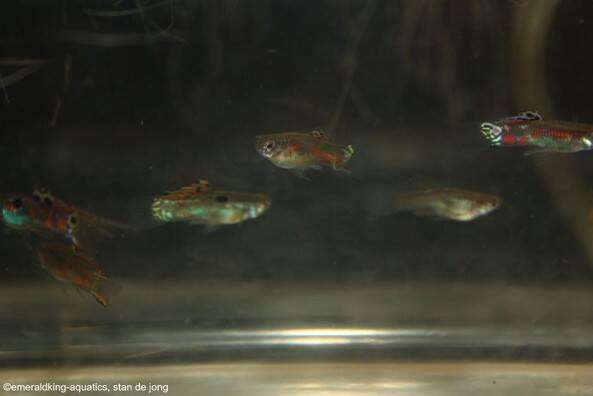

When it comes to pattern, the males of the Blue rio does show some similarities to the Ginga line of Tanaka. And wether they have swords or not depends on each individual male.

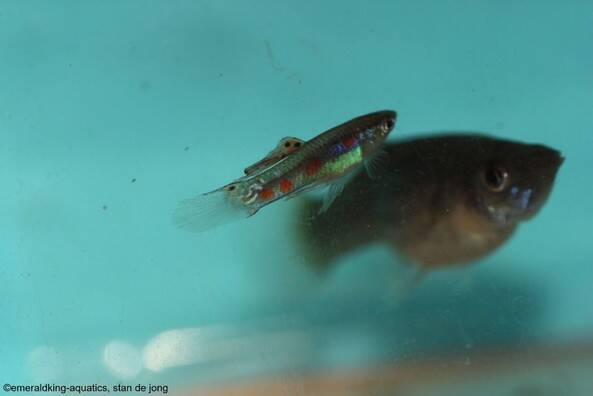
This species is quite hardy and not demanding. There's really not that much to tell about this species. But do compare this species with the Ginga line when it comes to care.
Japan blanco (aka Bianco)
A very attractive fancy guppy is the Japan blanco. It's actually a platinum white guppy. Furthermore, it's a blonde based strain where only the males turn white. The tail of the males are in general short and vary in shape like e.g. round-, spade-, spear- and flagtail.
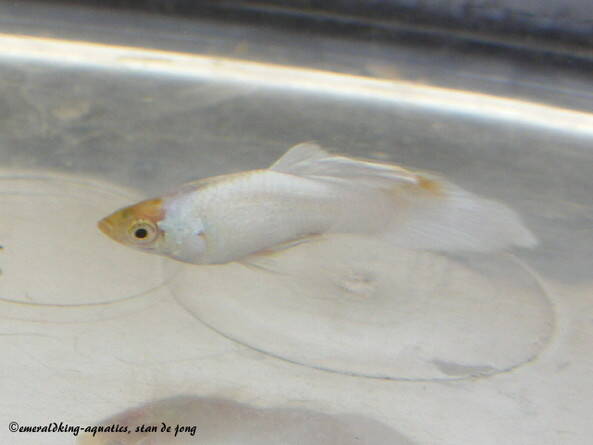
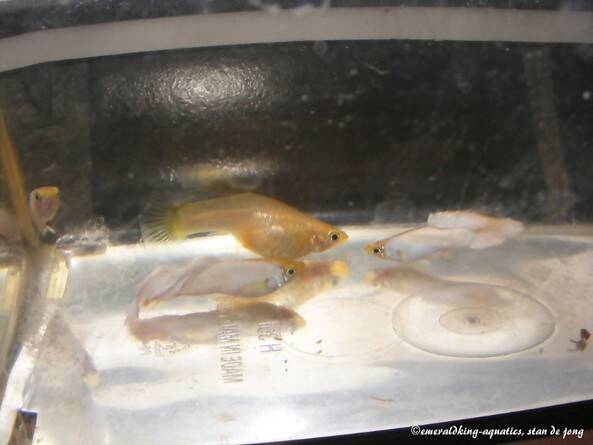
Females however do have translucent finnage or somewhat blonde markings in their fins. But both genders do have elongated dorsals. It's a prolific strain which seems a bit sensitive to fluctuations of the water parameters. And also this strain hardly chase their fry.

Ice guppy short tail albino
Another smaller fancy guppy is the ice guppy short tail albino. It's even a white based albino recessive A+ strain.
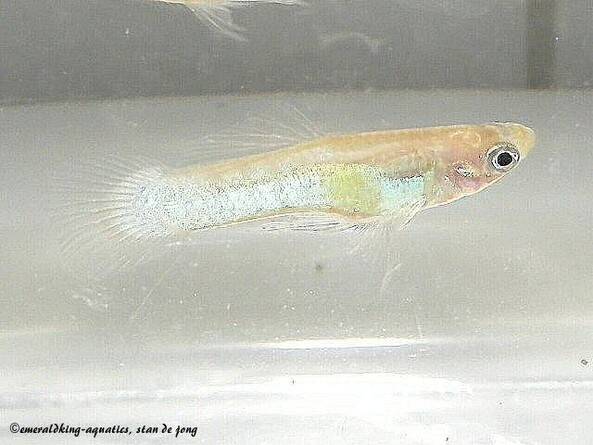
The male shown above does have red eyes and not black but in this picture the reflection of the flash has made the eyes darker. I don't know the origin of them but sometimes a blue snakeskin male will occur within the offspring. But in general males do tend to have blue shine on their bodies.
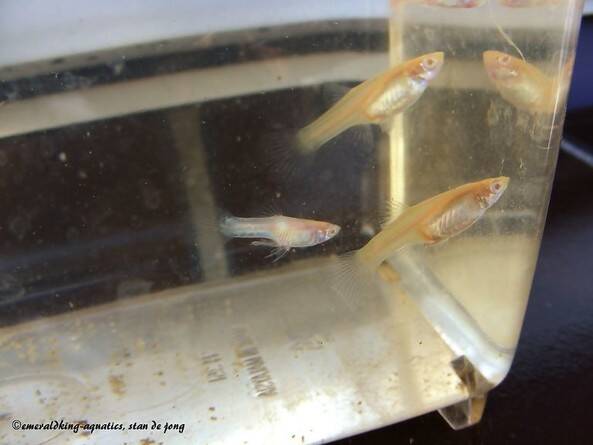
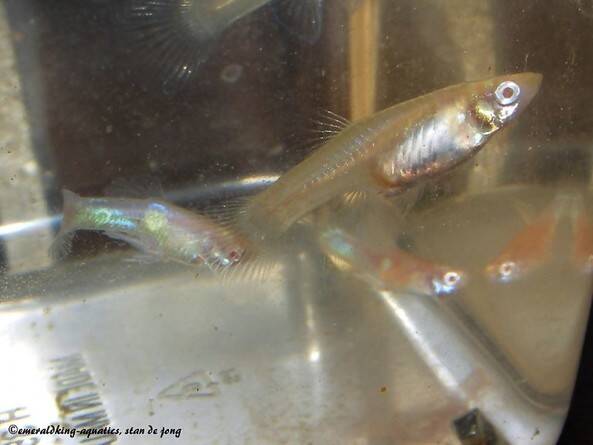
It's for sure a nice strain which can be kept in a smaller fishtank without any problems. Although, the females tend to grow a huge belly when pregnant, the number of offspring is generally not that high. And for being an albino strain, this strain is quite hardy.
Filigree albino short tail
Another small fancy guppy is the filigree albino short tail guppy. This strain is line that I've developed by using three lines: Blonde filigree top sword guppy, pink guppy and opal albino guppy. The end result is a short bodied albino guppy with filigree pattern. The males show some short swords.
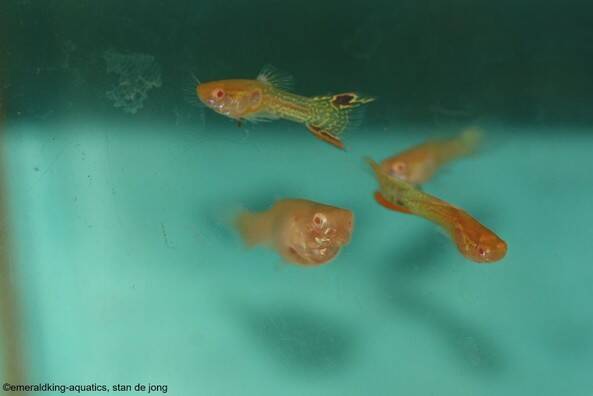

I do have to say that despite of their phenotype, no endler influence has been used overhere. They resemble a bit of snake (cobra) endlers (hybrid strain) . But they're different species. The females will become much bigger than the males. And sometimes a pink male will develop.
Magenta snake chest
Ever since the past two years (2014) I'm working on a strain which I've called "Magenta snake chest". The name can be explained very easily. It concerns a grey based guppy with a magenta look and a snakeskin pattern on its chest.

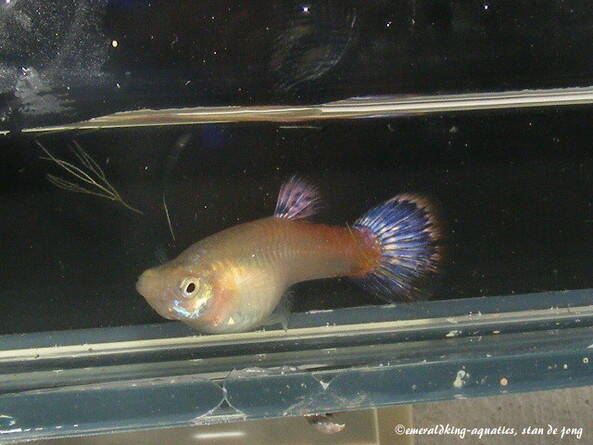
Above: a fullgrown male.(photo left) and a fullgrown female (photo right).
Below: a juvenile male and a juvenile female.
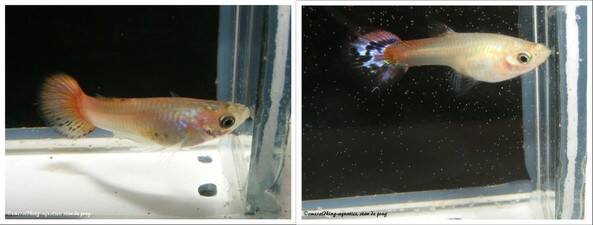
Had some struggles to get them right but after almost a year, the line breeds pure.
Below: An adult couple.


